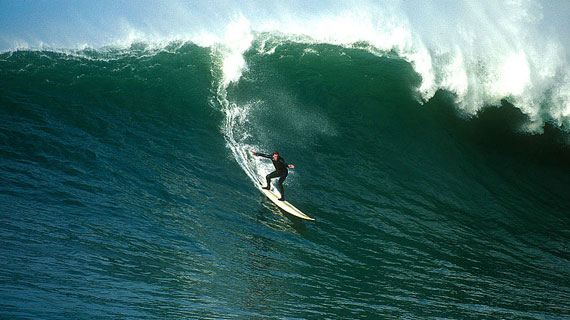 Surfing, unlike skating and wakeboarding, is not a sport where the conditions are going to be the same day to day. Yeah, the skate park might have water on it from some rain, or the lake might be choppy from some wind. But with surfing, if you don’t have waves, you don’t have surfing. For this reason, surfers spend a lot of time checking all different types of sources to figure out if there are waves or if there are going to be waves. I have compiled the top 5 ways to help you score waves more often.
Surfing, unlike skating and wakeboarding, is not a sport where the conditions are going to be the same day to day. Yeah, the skate park might have water on it from some rain, or the lake might be choppy from some wind. But with surfing, if you don’t have waves, you don’t have surfing. For this reason, surfers spend a lot of time checking all different types of sources to figure out if there are waves or if there are going to be waves. I have compiled the top 5 ways to help you score waves more often.
1. The Original Surf Check
The original surf check dates way back. Back to the days before internet, cell phones, and microwavable dinners. This is how the pioneers of surfing knew if there were waves. It is by far the most effective and simple way of finding out whether there is surf. What you do is walk, bike, or drive to the beach and look at your favorite spot. If you see waves, you go shred. If there are no waves, you don’t go surf and instead go skate or go back to sleep.
Pros: Reports from other sources may be incorrect or may have changed by the time you actually go to surf. With this method, you are there and ready to go if it is good.
Cons: If you don’t live really close to the beach, you can feel like you are wasting your time and gas if you get skunked on waves.
2. Surf Websites
The internet has created a place where any and all information can be posted. Luckily, as with the surfingblog.com, people have taken the time to create websites dedicated to surfing. A couple of these sites have amazing technologies dedicated to surf forecasting around the world. Major websites like surfline.com and wavewatch.com have forecasts, live cams, and swell charts that will help you know when surf is coming, up to even a week in advance.
Pros: These sites can be very accurate and give you information you wouldn’t otherwise be able to find in one convenient location. Info includes swell direction, wind speed and direction, tide charts, swell charts, etc.
Cons: These sites can be quite inaccurate and limited to only certain areas. If your local break isn’t a major break, you most likely won’t be able to see it on a live cam. Also, they often charge money to use the “premium” features.
3. NOAA (The National Oceanic and Atmospheric Administration)
By definition, the NOAA is a federal agency focused on the condition of the oceans and the atmosphere. Although it can be a tricky and complicated site to navigate at first, the NOAA is a great site for watching swells all around the world and following them as they march into your local break.
Pros: Accurate and FREE !!
Cons: Hard to navigate site. Since they are not primarily a surf website, they have lots of other info that is great to know, but won’t help you score more waves.
4. Cell Phones
Cell phones have come a long way from the days of the Zac Morris, Saved by the Bell Brick. They are smaller, lighter, and do more than just make calls. Now you can play games, cruise the internet, write emails, and even check the surf. Apple’s iPhone has apps that allow you to link up with surf websites while on the go. This allows you to check the surf when you are on the way or even while you stand in front of a break that isn’t pumping like you thought it would be. (Check back for a later post that dives more in depth into iPhone apps for surfing.) You can also call local surf numbers that will tell you the forecasted swells for the area.
Pros: You can check the surf even if you aren’t at home in front of your computer. It goes mobile right along with you while you are looking for surf.
Cons: You need to have service and a more expensive phone for the apps.
5. Local News Reports
If you live in a coastal community, you have most likely seen the swell forecasted on the local news. The news meteorologist (weatherman) will usually talk about any storms coming your way and how big the waves are going to be in the area. They will also tell you if there are going to be any kinds of small craft warnings. Surfers want small craft warnings, fisherman don’t.
Pros: They usually have local knowledge and you can stay up to date on your current affairs while waiting for the weather portion of the news
Cons: You have to catch the news. That means you have to know what time it is on and be home in front of the TV.
There are many ways you can stay up to date on what is happening in the ocean, and make sure you are at your favorite break when the waves come in. Let us know about your experiences trying to keep up with the latest swell.

